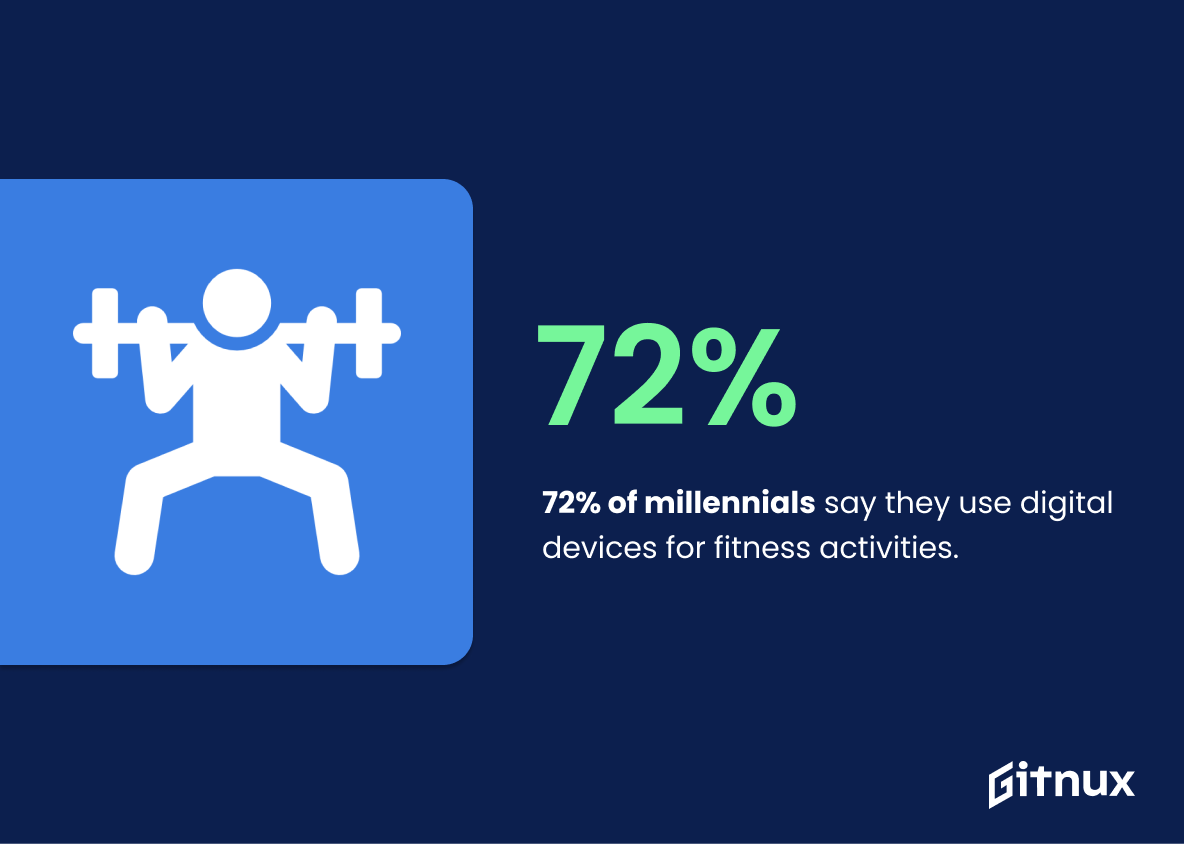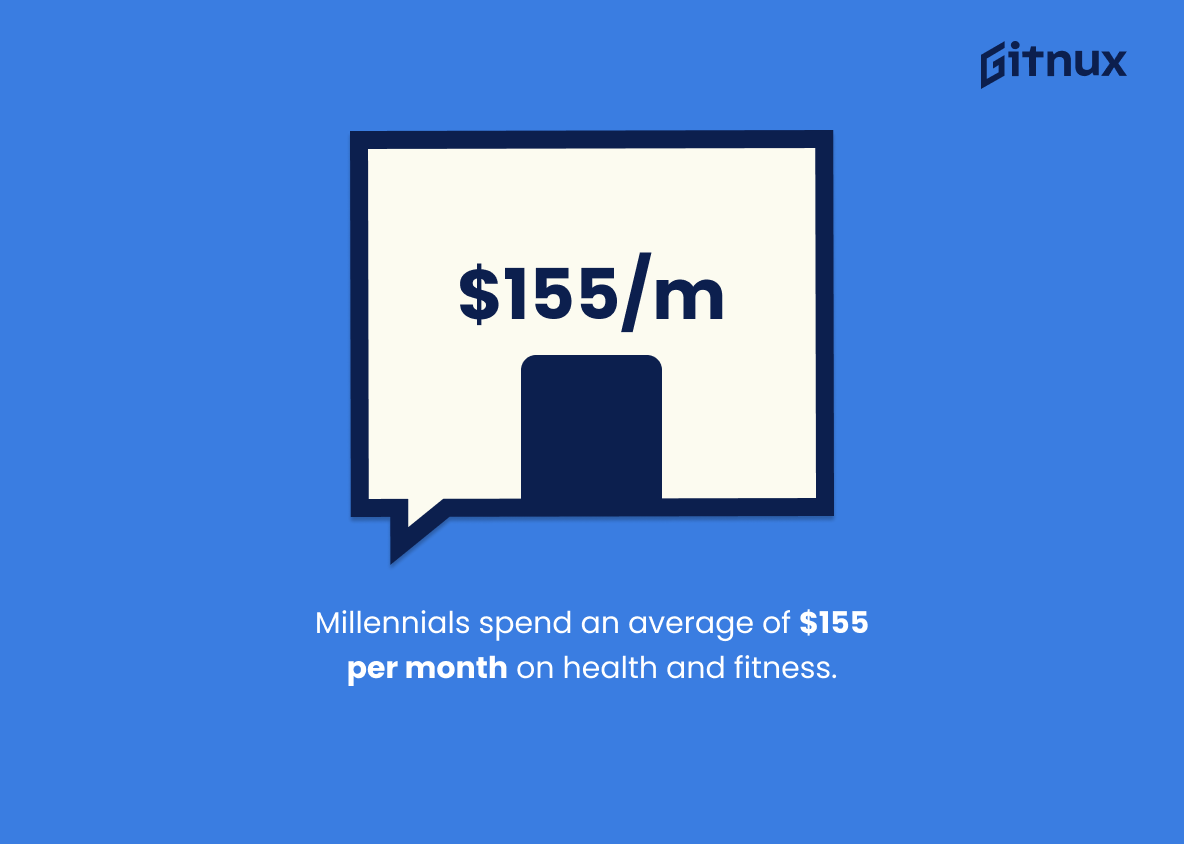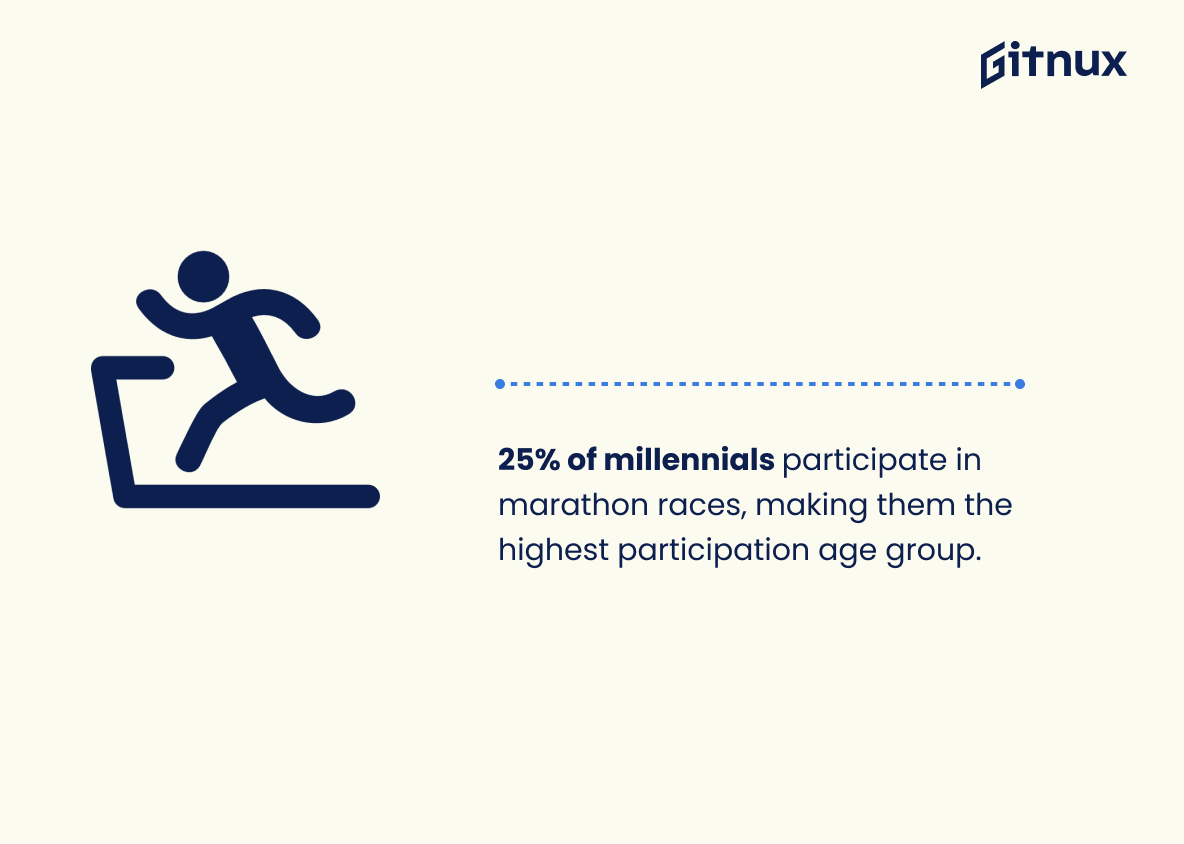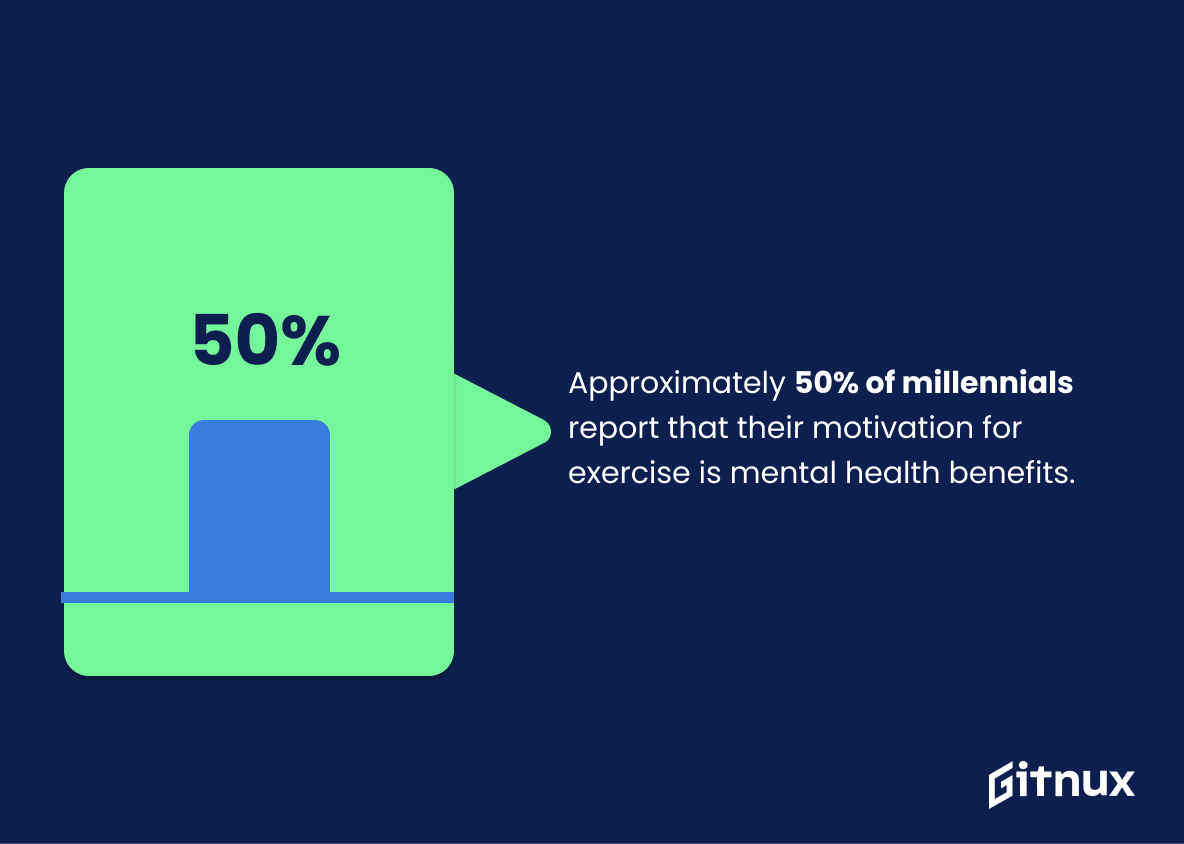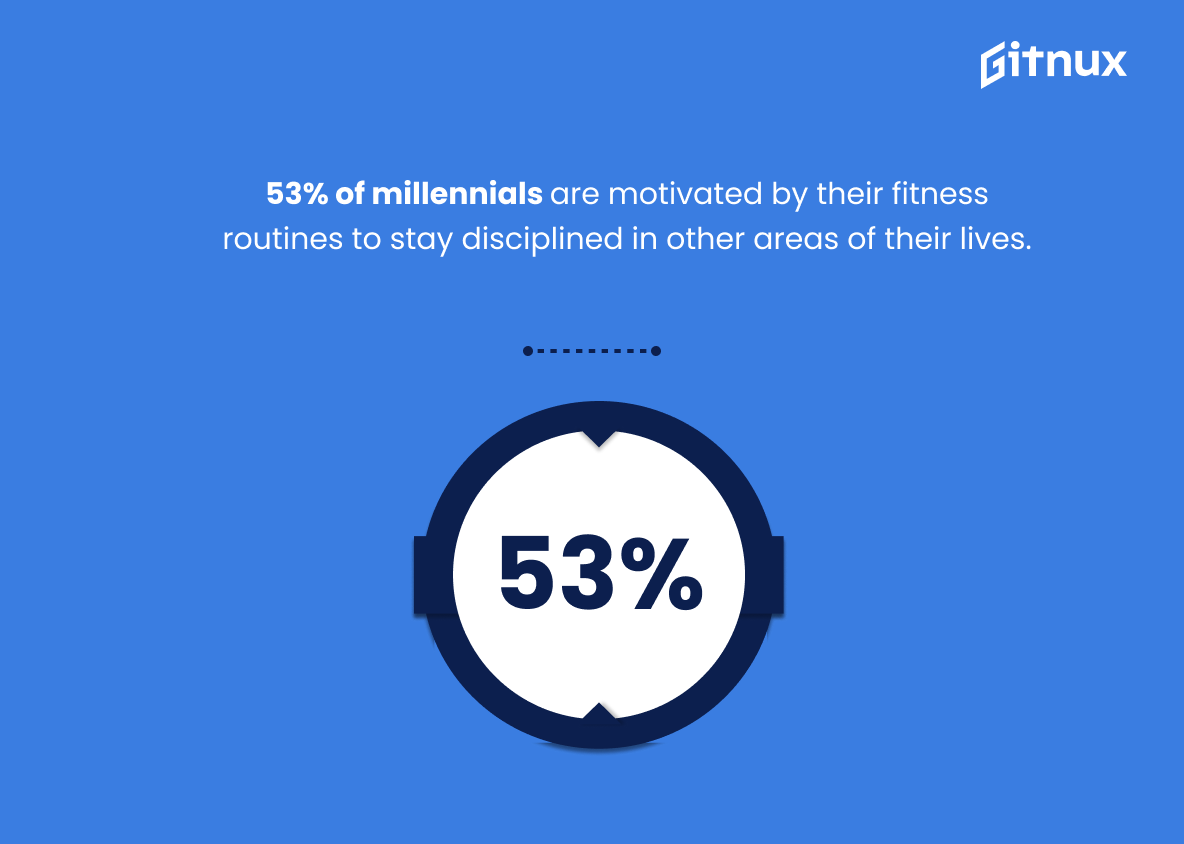Millennials are the largest generation in history, and they have a unique approach to fitness. From high-calorie burning activities to personalized experiences, millennials prioritize their health and wellness more than any other age group. This blog post will explore some of the most interesting statistics about millennial fitness habits that demonstrate how this generation is changing the way we think about exercise.
We’ll look at data from sources such as Club Industry, Deloitte, Mintel Global Beauty & Fitness Trends Report 2017/2018, Sport Millennial Survey 2018 by SF Express Co., Ltd., KPMG 2013 Physical Fitness Study Group Survey Results Final 1.0 report by UAB Institute for Research on Race & Public Policy (IRREP), Statista’s US Wellness Spending Per Month survey results 2019/2020 edition and many others to get an insight into what motivates millennials when it comes to staying fit and healthy. So let’s dive right in.
This statistic is a telling indication of the fitness habits of millennials compared to other generations. It shows that millennials are more likely to engage in activities that burn more calories, suggesting that they are more health-conscious than their predecessors. This is an important insight to consider when discussing the fitness habits of millennials, as it provides a valuable perspective on how they prioritize their health.
1 in 3 millennials are willing to pay more for personalized fitness experiences.
This statistic is a telling indication of the importance millennials place on personalizing their fitness experiences. It speaks to the desire of this generation to have a fitness routine that is tailored to their individual needs and preferences. This is an important insight for anyone looking to create content about millennials and fitness, as it highlights the importance of providing personalized experiences to this demographic.
Millennials Fitness Statistics Overview
72% of millennials say they use digital devices for fitness activities.
This statistic is a telling indication of the importance of digital devices in the lives of millennials when it comes to fitness activities. It shows that the majority of millennials are relying on digital devices to help them stay fit and healthy, which is a trend that is likely to continue in the future. This statistic is important to consider when discussing millennials’ fitness habits, as it provides insight into the role that technology plays in their fitness routines.
Millennials spend an average of $155 per month on health and fitness.
This statistic is a telling indication of the importance Millennials place on health and fitness. It shows that they are willing to invest in their physical well-being, which is a positive sign for the future of the fitness industry.
At least 45% of millennials use smartphone apps for fitness and health purposes.
This statistic is a telling indication of the importance millennials place on fitness and health. It shows that a significant portion of millennials are actively using technology to track and improve their physical wellbeing. This is an important insight for anyone looking to understand the fitness habits of millennials and how to best reach them.
77% of millennials prefer exercising in groups over exercising alone.
This statistic is significant in the context of a blog post about Millennials Fitness Statistics because it reveals the preference of a large portion of the millennial population when it comes to exercise. It shows that the majority of millennials prefer to exercise in groups, which could be indicative of a larger trend in the millennial generation towards social activities and group-oriented activities. This could be useful information for fitness professionals and marketers looking to target the millennial demographic.
Over 60% of millennials will try a new fitness offering each year.
This statistic is a testament to the fact that millennials are eager to explore new fitness offerings and stay on top of the latest trends in the fitness industry. It highlights the importance of staying up-to-date with the latest fitness trends and offerings for this demographic, as they are more likely to be open to trying something new.
62% of millennial women and 51% of millennial men are more likely to engage in HIIT workouts.
This statistic is significant in the context of a blog post about Millennials Fitness Statistics because it highlights the trend of millennials engaging in HIIT workouts. It demonstrates that millennial women are more likely to participate in HIIT workouts than millennial men, indicating that this type of exercise is becoming increasingly popular among this demographic.
Millennials are 17% more likely to join a local sports club than non-millennials.
This statistic is a telling indication of the fitness habits of Millennials, showing that they are more likely to join a local sports club than their non-Millennial counterparts. This suggests that Millennials are more likely to prioritize physical activity and staying fit, which could be beneficial for their overall health and well-being. This statistic is an important piece of information to consider when discussing Millennials’ fitness habits and could be used to inform strategies for encouraging physical activity among this age group.
25% of millennials participate in marathon races, making them the highest participation age group.
This statistic is significant in the context of a blog post about Millennials Fitness Statistics because it demonstrates the dedication of this age group to physical fitness. It shows that millennials are more likely to take part in marathon races than any other age group, indicating a commitment to health and wellness. This statistic is a testament to the commitment of millennials to staying fit and healthy, and it serves as an inspiration to others to follow suit.
Approximately 50% of millennials report that their motivation for exercise is mental health benefits.
This statistic is a powerful reminder of the importance of physical activity for millennials’ mental health. It highlights the need for more resources and support to help this generation stay active and healthy. It also speaks to the growing awareness of the connection between physical and mental health, and how exercise can be a powerful tool for improving both. This statistic is a valuable insight into the motivations of millennials when it comes to exercise, and can be used to inform strategies for promoting physical activity among this age group.
53% of millennials are motivated by their fitness routines to stay disciplined in other areas of their lives.
This statistic is a testament to the power of fitness in the lives of millennials. It shows that not only are millennials taking their physical health seriously, but they are also using it as a tool to stay disciplined in other areas of their lives. This is an important insight that can be used to inform strategies for helping millennials stay healthy and productive.
Conclusion
From the statistics presented, it is clear that millennials are more active and prioritize fitness over other hobbies and activities. They participate in high-calorie burning activities at a higher rate than Generation X or Baby Boomers, they prefer boutique classes to traditional gyms, and they spend an average of $155 per month on health and fitness. Millennials also use digital devices for tracking their progress as well as accessing information online via social media platforms.
Furthermore, many millennials prefer exercising in groups rather than alone while others practice yoga regularly or join local sports clubs. Finally, millennial runners consider themselves “lifestyle” athletes focused on well-being and happiness with 25% participating in marathon races each year – making them the highest participation age group among all generations surveyed.
References
0. – https://www.www.americanbar.org
1. – https://www.p.sf-express.com
2. – https://www.www2.deloitte.com
3. – https://www.www.usatoday.com
4. – https://www.www.athleticbusiness.com
5. – https://www.www.statista.com
6. – https://www.pubmed.ncbi.nlm.nih.gov
7. – https://www.www.mintel.com
8. – https://www.www.stylist.co.uk
9. – https://www.www.nytimes.com
10. – https://www.endurancebusiness.com
11. – https://www.www.shape.com
